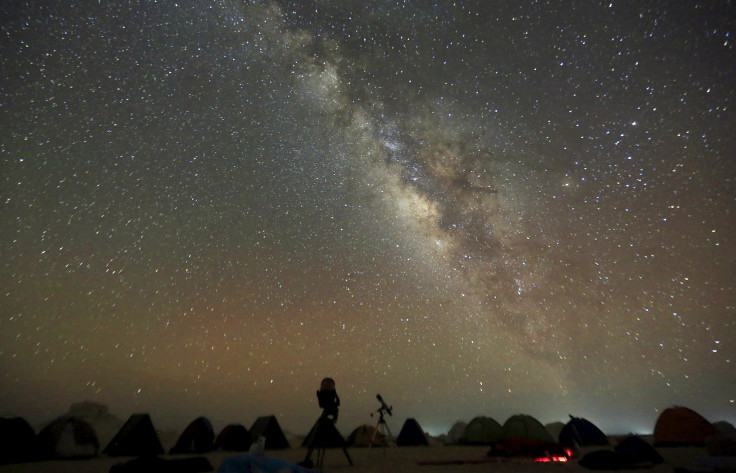Quantum Entanglement: 600-Year-Old Starlight Confirms ‘Spooky Action At A Distance’ Is Very Real

Quantum entanglement is just one of the many weird things that pop up when you try to understand the laws governing the world of subatomic particles. The phenomenon of entanglement — wherein two particles can be separated by billions of light-years and yet be instantly affected by changes to the quantum state of one another — seems so outlandish that even Albert Einstein had trouble wrapping his head around the concept.
Despite Einstein’s reservations, though, quantum entanglement has been empirically observed several times over the past few decades. The “spooky action at a distance” — as the famed physicist once derisively called it — is very real.
However, even scientists who have confirmed that quantum entanglement is real are aware that their experiments may have been affected by hidden variables — ones that make it seem like two particles are entangled even when they are not. In order to remove this possibility, the physicist John Bell devised the Bell test in 1960s, which was meant to prove that correlations between the two particles in an entangled pair — if above a certain threshold — cannot emerge due to any hidden properties.
Over the past four decades, physicists have been devising and carrying out new versions of that test in efforts to close loopholes that may explain the particles’ observed behavior without the need to resort to quantum entanglement. In 2015, for instance, a team of researchers in the Netherlands succeeded, through one of the most rigorous tests of quantum mechanics, in closing two such loopholes simultaneously — the detection and communication loopholes.
Now, a separate team of international researchers has succeeded in reducing the possibility that another loophole (known as the freedom-of-choice loophole) may be responsible for observed correlations between particles.
“At the heart of quantum entanglement is the high degree of correlations in the outcomes of measurements on these pairs [of particles],” David Kaiser, a physicist at the Massachusetts Institute of Technology (MIT) and part of the research team that carried out the experiment, said in a statement. “But what if a skeptic or critic insisted these correlations weren’t due to these particles acting in a fully quantum mechanical way? We want to address whether there is any other way that those correlations could have snuck in without our having noticed.”
So what exactly is the freedom-of-choice loophole?
Let’s assume there are two seemingly entangled photons A and B. Is it possible that some unknown and undetected property of the universe we live in may be restricting what tests experimenters choose to perform on the particles, giving rise to what is only an illusion of entanglement? Could it be that the researchers measuring the properties of correlated particles have a limited set of choices to choose from?
The only way to close this loophole would be to: one, use an unpredictable source, say a random number generator, to choose what properties of photons A and B should be measured in the split second before the particles arrive at their detectors, and two, use a distant cosmic object as number generator so that if some hidden variables were, in fact, interfering with the randomness of the choice of measurements, they would have had to have set those changes in motion before the time the light left the cosmic source.
This is what Kaiser and his co-researchers did in their experiment. They set up a source to produce highly entangled pairs of photons on the roof of a university laboratory in Vienna, such that during each experimental run, entangled photons were shot out in opposite directions, toward detectors located in buildings several city blocks away. And, in order to ensure that their measurement choice was truly random, they used stars as guides — the closest of which was 600 light-years from Earth.
They found that even when using 600-year-old starlight, the entanglement observed in all of the nearly 100,000 pairs of photons was well above the threshold set by Bell, and could only be accounted for by invoking the laws of quantum mechanics.
“The real estate left over for the skeptics of quantum mechanics has shrunk considerably,” Kaiser said. “We haven’t gotten rid of it, but we’ve shrunk it down by 16 orders of magnitude.”
The next step would be to test entanglement using light from extremely distant quasars. Doing so would allow the scientists to understand how far back in the past the quantum notion of reality holds true.
“For us it seems like kind of a win-win,” Andrew Friedman from MIT, who was also involved in the research, told Quanta magazine. “Either we close the loophole more and more, and we’re more confident in quantum theory, or we see something that could point toward new physics.”
© Copyright IBTimes 2025. All rights reserved.






















